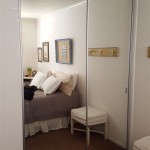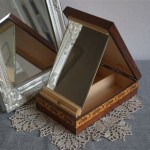How To Mirror Fire Tablet to Samsung TV
Mirroring a Fire Tablet to a Samsung TV allows users to display content from their tablet on a larger screen, enhancing the viewing experience for movies, presentations, photos, and other applications. Several methods are available to achieve this, each with its own set of requirements and limitations. This article provides a comprehensive guide to mirroring a Fire Tablet to a Samsung TV, outlining various techniques and troubleshooting tips for a successful connection.
Understanding Miracast and Screen Mirroring Technology
Miracast is a wireless display standard that enables devices to transmit video and audio to compatible receivers, such as smart TVs. It establishes a direct Wi-Fi connection between the sending device (Fire Tablet) and the receiving device (Samsung TV), without requiring an external Wi-Fi network. Samsung TVs typically support Miracast under the name "Screen Mirroring" or "Smart View." Prior to attempting to mirror the Fire Tablet, it is essential to ensure that both the Fire Tablet and the Samsung TV support Miracast technology.
Older Samsung TV models may not have built-in Miracast functionality. In such cases, an external Miracast adapter can be connected to the TV's HDMI port to enable screen mirroring capabilities. These adapters effectively add Miracast support to non-smart TVs or older smart TVs. Identifying the compatibility of both devices is the first step in ensuring a successful mirroring process.
Mirroring Using the Built-in Screen Mirroring Functionality
This method relies on the native screen mirroring capabilities of both the Fire Tablet and the Samsung TV. The procedure generally involves enabling screen mirroring on the TV and then initiating the connection from the Fire Tablet.
On the Samsung TV, navigate to the "Source" menu using the TV remote. The "Source" menu lists all available input sources, such as HDMI ports and connected devices. Look for an option labeled "Screen Mirroring," "Smart View," or a similar term that indicates wireless display functionality. Select this option to activate the TV's screen mirroring receiver. The TV will typically display a message indicating that it is waiting for a connection.
On the Fire Tablet, swipe down from the top of the screen to access the Quick Settings menu. Locate the "Screen Mirroring" or "Cast" icon. Its appearance might vary depending on the Fire Tablet model and software version. Tap the icon to initiate a search for available devices. A list of compatible devices within range should appear. Select the Samsung TV from the list. The TV's name will usually be displayed. The Fire Tablet will then attempt to establish a connection with the selected Samsung TV. A prompt might appear on the TV screen requesting confirmation to allow the connection. Accept the connection request using the TV remote. Once the connection is established, the Fire Tablet's screen will be mirrored on the Samsung TV.
The quality and stability of the screen mirroring connection depend on the strength of the Wi-Fi Direct signal between the Fire Tablet and the Samsung TV. Obstructions and interference can disrupt the connection, leading to lag or disconnections. It is recommended to position the Fire Tablet relatively close to the Samsung TV to minimize interference and maintain a stable connection.
To disconnect the screen mirroring session, either tap the "Screen Mirroring" icon on the Fire Tablet again and select "Disconnect," or navigate back to the "Screen Mirroring" option on the Samsung TV and select "Disconnect" from there. Disconnecting properly ensures that the connection is terminated correctly and prevents potential issues with future mirroring attempts.
Utilizing Third-Party Apps
In cases where the built-in screen mirroring functionality is not working optimally or is unavailable, third-party apps designed for screen mirroring can offer an alternative solution. Several apps are available on the Amazon Appstore that facilitate screen mirroring between Android devices and Samsung TVs. These apps often provide additional features, such as customizable resolution options and support for different mirroring protocols.
Prior to installing any third-party screen mirroring app, it is essential to review the app's permissions and user reviews to ensure its safety and reliability. Malicious apps can pose a security risk to the device. Select reputable apps with high ratings and positive feedback from other users. Examples of such apps include screen mirroring apps specifically designed for Samsung TVs.
After installing a suitable screen mirroring app, follow the app's instructions to connect the Fire Tablet to the Samsung TV. These apps typically require both devices to be connected to the same Wi-Fi network. The app will guide the user through the necessary steps to establish the connection, which may involve entering a PIN code displayed on the TV or selecting the TV from a list of available devices.
Third-party screen mirroring apps may offer more advanced features than the built-in screen mirroring functionality, such as the ability to customize the resolution of the mirrored screen or to mirror only specific applications instead of the entire screen. These features can be useful for optimizing the mirroring experience for different types of content.
It is important to note that the performance of third-party screen mirroring apps can vary depending on the app's quality, the network conditions, and the capabilities of the Fire Tablet and Samsung TV. Experimenting with different apps may be necessary to find the one that provides the best performance and compatibility for your specific setup.
Troubleshooting Common Mirroring Issues
Even with compatible devices and the correct settings, mirroring a Fire Tablet to a Samsung TV can sometimes encounter issues. These issues can range from connectivity problems to display errors. Here are some common problems and potential solutions:
Connectivity Problems: One of the most common issues is the inability of the Fire Tablet to detect the Samsung TV. This can be caused by several factors, including a weak Wi-Fi signal, incorrect settings on either device, or interference from other wireless devices. Ensure that both the Fire Tablet and the Samsung TV are connected to the same Wi-Fi network and that the Wi-Fi signal is strong. Try restarting both devices to refresh their network connections. Check the TV's settings to make sure that screen mirroring is enabled and that the TV is set to be discoverable. Reduce interference by moving wireless devices away from the Fire Tablet and the Samsung TV.
Lag and Buffering: If the screen mirroring connection is established but the video and audio are lagging or buffering, this can be due to a slow Wi-Fi connection or insufficient processing power on one of the devices. Try closing unnecessary apps on the Fire Tablet to free up processing resources. Reduce the resolution of the mirrored screen in the settings of the screen mirroring app. Move the Fire Tablet closer to the Samsung TV to improve the Wi-Fi signal strength. Consider upgrading your Wi-Fi router if you are experiencing frequent lag or buffering issues.
Display Errors: Sometimes, the mirrored screen may not be displayed correctly on the Samsung TV. This can be caused by incorrect aspect ratio settings, incompatible resolution settings, or outdated software on one of the devices. Check the aspect ratio settings on both the Fire Tablet and the Samsung TV to ensure that they are set correctly. Try adjusting the resolution of the mirrored screen in the settings of the screen mirroring app. Ensure that both the Fire Tablet and the Samsung TV are running the latest software updates. Software updates often include bug fixes and performance improvements that can resolve display errors.
Audio Issues: Audio problems can also occur during screen mirroring, such as no audio being transmitted to the Samsung TV or distorted audio. Check the audio settings on both the Fire Tablet and the Samsung TV to ensure that the correct audio output device is selected. Try restarting both devices to refresh their audio connections. Ensure that the volume is turned up on both the Fire Tablet and the Samsung TV. If using a third-party screen mirroring app, check the app's settings to see if there are any audio-related options that need to be adjusted.
By systematically addressing these common issues and potential solutions, users can often resolve the problems they encounter when mirroring a Fire Tablet to a Samsung TV and achieve a seamless and enjoyable viewing experience.
Ultimately, the most effective method for mirroring a Fire Tablet to a Samsung TV may vary depending on the specific devices involved and the user's individual needs. Experimenting with different approaches and troubleshooting techniques can help users find the optimal solution for their setup.

How To Screen Mirror Android Tablet Samsung Tv Non Wirelessly Completely Free

Kindle Fire Hdx 7 Mirror Screen At T

Can You Mirror Your Fire Tablet To Television

Screen Mirroring Tablet To Tv With Fire Stick Cube

Can You Mirror Your Fire Tablet To Television

Kindle Fire Mirror To Tv

Fire Hd10 How To Wirelessly Mirror Tv Using Or Stick

Kindle Fire Hdx 7 Mirror Screen At T

How To Mirror Your Fire Tablet Tv

Screen Mirroring Iphone To Firestick Free Trial App Airbeamtv








